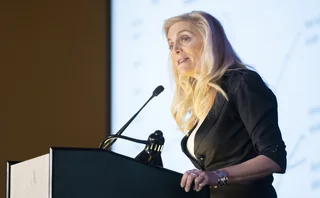
What a difference a year makes
One such offering came from the now-defunct Reuters and CME joint-venture platform, FXMarketSpace, which launched an alternative settlement system FXSettle using the ‘on-us' settlement model. Meanwhile, vendors and a group of up to eight dealers began plans to develop another system.
Just as it seemed CLS was weighing further on that back foot - despite its ownership structure - Bear Stearns collapsed. CLS third-party providers, and CLS itself, noted interest in using CLS to manage settlement risk had risen. Then the single biggest event of the year occurred, sending a series of penetrating shocks waves throughout the industry - the September 15 bankruptcy filing of Lehman Brothers Group.
From that date onwards, the catastrophe spiralled as a continuing lack of interbank funding in October led to the domino collapse of Iceland's three largest commercial banks and the government bail-out out of UK institutions such as Royal Bank of Scotland. Banks that had previously shown no interest in CLS soon became keen to sign on, while major dealers started to incorporate CLS into their plans for growth.
And last week it emerged Bank of Canada might have convinced Bank of Nova Scotia to drop its resistance to CLS and join, in order to stabilise the domestic financial markets. The Canadian dealer is due to go live as a member next year.
What a difference a year makes.
Next year, it's unlikely the evolution of the FX market will stop, although the drivers might be different, with a focus on improving pricing of risk. But the beauty of the FX industry is its willingness to innovate in order to self-regulate.
Saima Farooqi, Editor
Comments? please email saima.farooqi@incisivemedia.comOnly users who have a paid subscription or are part of a corporate subscription are able to print or copy content.
To access these options, along with all other subscription benefits, please contact customer services - www.fx-markets.com/static/contact-us, or view our subscription options here: https://subscriptions.fx-markets.com/subscribe
You are currently unable to print this content. Please contact customer services - www.fx-markets.com/static/contact-us to find out more.
You are currently unable to copy this content. Please contact info@fx-markets.com to find out more.
Copyright Infopro Digital Limited. All rights reserved.
You may share this content using our article tools. Printing this content is for the sole use of the Authorised User (named subscriber), as outlined in our terms and conditions - https://www.infopro-insight.com/terms-conditions/insight-subscriptions/
If you would like to purchase additional rights please email info@fx-markets.com
Copyright Infopro Digital Limited. All rights reserved.
You may share this content using our article tools. Copying this content is for the sole use of the Authorised User (named subscriber), as outlined in our terms and conditions - https://www.infopro-insight.com/terms-conditions/insight-subscriptions/
If you would like to purchase additional rights please email info@fx-markets.com
More on Technology
ECB and BoJ point to major problem in DLT-based payments
Project Stella report says central source of information could create single point of failure
Asia keener to adopt mobile FX trading – BidFX
Fintech firm updates mobile app to offer more features; security concerns represent major development challenges
Brainard: US must review payments system oversight
Big tech’s currency plans could weaken payments oversight – senior Fed official
Cambodia’s blockchain payment network will go live in early 2020
Bakong could be linked with other Asean countries as cross-border transfers are part of project’s next phase
Baton rounds out funding with $4m Illuminate investment
DLT firm plans Asia expansion due to demand for delivery of assets in Asian and non-CLS settled currencies
Nomura advances AI trading platform for FX and fixed income
Over the next year the bank will converge its trading desk infrastructure to create a cross-asset class system
Emerging market central banks keener to issue CBDCs – BIS
BIS survey shows central banks shifting emphasis from wholesale to retail CBDCs
StanChart’s e-FX trading engine goes live in Singapore
Trade latency has been cut by more than 80%, Standard Chartered says







